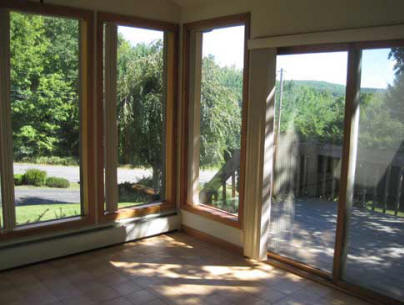 The sun is a renewable, ever-present source of energy for your home. But you don’t have to add solar panels to your home’s roof to reap the benefits of the sun’s power.
The sun is a renewable, ever-present source of energy for your home. But you don’t have to add solar panels to your home’s roof to reap the benefits of the sun’s power.
Passive solar design — done right – can heat and cool your home in environmentally friendly and cost effective ways. Passive solar design takes advantage of a particular site’s climate (and microclimate) and uses special building materials to cool and heat the house using (or deflecting) the sun’s rays.
But creating a passive solar home requires careful design that takes into consideration your particular location and climate.
Successful Passive Solar Design
In order for a passive solar design to work successfully you need these three elements:
- South-facing windows. These windows should be unobstructed by trees or other buildings from at least 9 a.m. to 3 p.m. every day. During the summer, the windows should have shades to avoid overheating the house.
- Thermal mass. This is a type of materials that will absorb the heat from the sun during the day – it could consist of wood, solid log or timbers, concrete, brick, tile, stone, or SIP (structural insulated panels). Thermal mass can become part of the structural or finish materials of a home. Thermal mass not only helps keep a house warm in the winter, but also helps keep things cool during the hotter months by absorbing the warm air in the house.
- Distribution and control systems. In order to get the heat distributed around your house from the south-facing windows, you need a distribution system. This can be as simple as small fans placed near the windows to distribute heat. Controlling the amount of heat from the sun can be controlled through roof overhands on south facing windows during the summer months, or by manually lowering blinds or shades. You can also opt for more automated methods including installing thermostats that control fans or blowers and vents or dampers.
